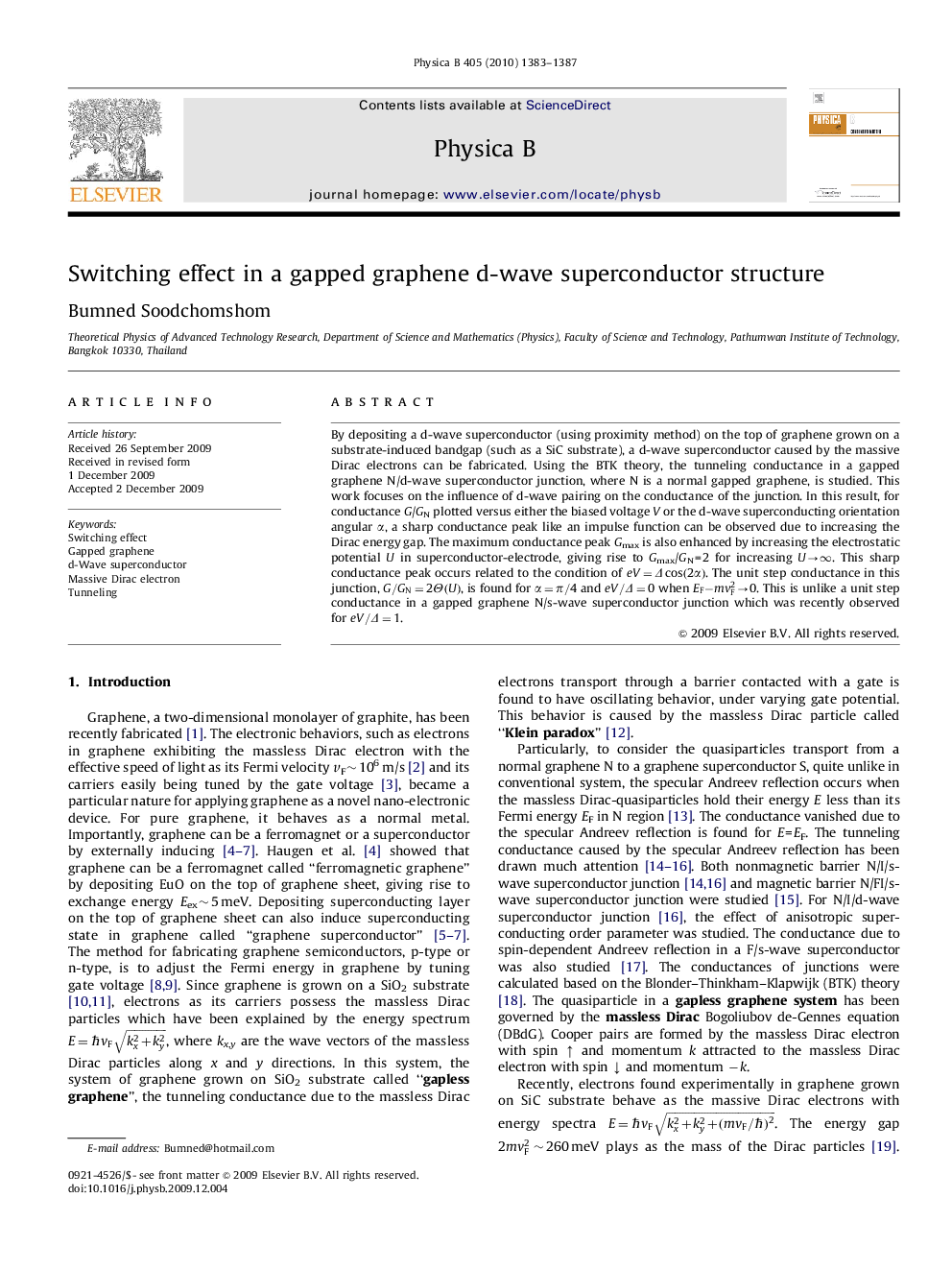| Article ID | Journal | Published Year | Pages | File Type |
|---|---|---|---|---|
| 1812860 | Physica B: Condensed Matter | 2010 | 5 Pages |
By depositing a d-wave superconductor (using proximity method) on the top of graphene grown on a substrate-induced bandgap (such as a SiC substrate), a d-wave superconductor caused by the massive Dirac electrons can be fabricated. Using the BTK theory, the tunneling conductance in a gapped graphene N/d-wave superconductor junction, where N is a normal gapped graphene, is studied. This work focuses on the influence of d-wave pairing on the conductance of the junction. In this result, for conductance G/GN plotted versus either the biased voltage V or the d-wave superconducting orientation angular α, a sharp conductance peak like an impulse function can be observed due to increasing the Dirac energy gap. The maximum conductance peak Gmax is also enhanced by increasing the electrostatic potential U in superconductor-electrode, giving rise to Gmax/GN=2 for increasing U→∞U→∞. This sharp conductance peak occurs related to the condition of eV=Δcos(2α). The unit step conductance in this junction, G/GN=2Θ(U)G/GN=2Θ(U), is found for α=π/4α=π/4 and eV/Δ=0eV/Δ=0 when EF−mvF2→0. This is unlike a unit step conductance in a gapped graphene N/s-wave superconductor junction which was recently observed for eV/Δ=1eV/Δ=1.
